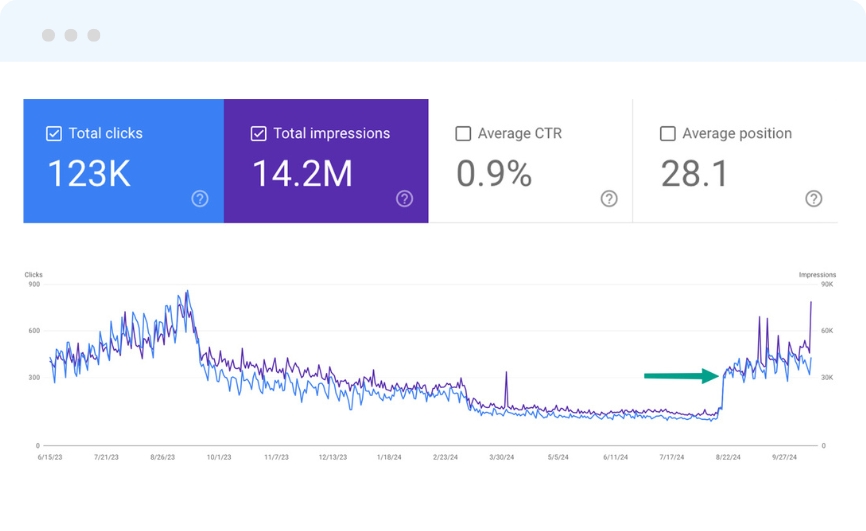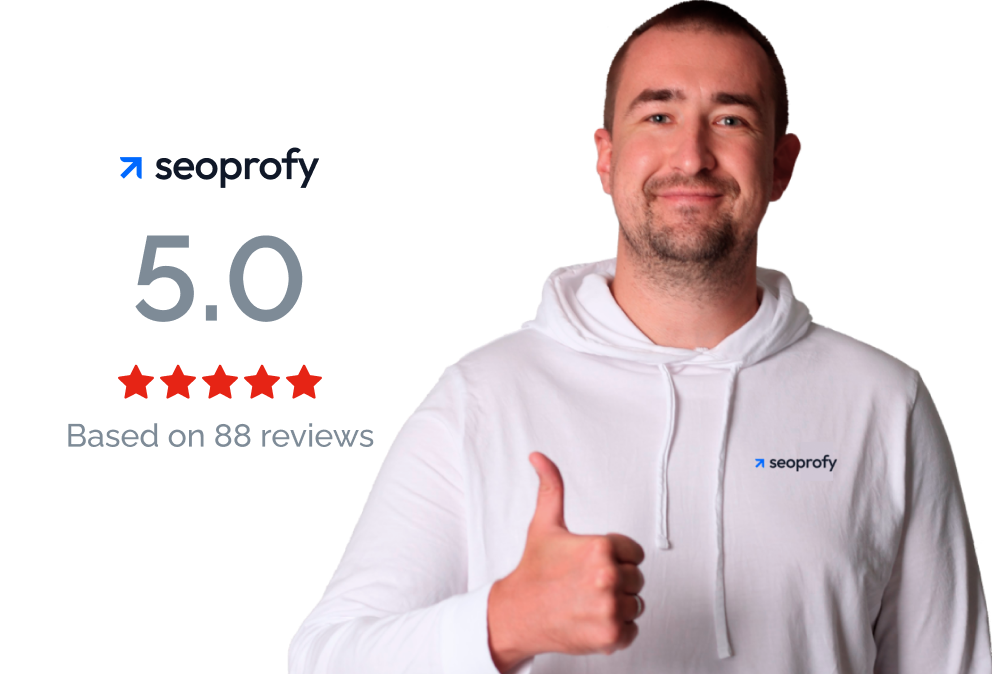2024: Starting Point
| Domain Age | 10 years |
| Niche/Market | Car Buying Services |
| GEO | USA |
| Target Language | EN, ES |
| Daily Organic Traffic | 600 – 800 users before the drop, around 100 users/day at the start of cooperation |
| Backlink profile | 500 Ref. Domains |
| Pages | 2.7K |

This case study is divided into two parts, as this reflects the format in which our collaboration with the client started and continues successfully.
Part 1: Recovery Strategy after Several Google Updates
Our client, the owner of a U.S.-based automotive website, reached out to us for help after experiencing significant traffic loss following the September 2023 Helpful Content Update. To diagnose the underlying issues, we proposed our SEO Recovery service.

The project kicked off in March 2024, as shown in the accompanying screenshot.
The client’s website experienced a significant decline in traffic after the Google September 2023 Helpful Content Update. Traffic continued to decrease with every subsequent update, including the October 2023 Core Update, October 2023 Spam Update, and the November 2023 Core Update.
During this period, the client’s team experimented with several strategies to reverse the decline:
- Partially updated content on key landing pages
- Completely removed the Disavow file
- Adjusted the internal linking structure
We were provided with extensive information at the start of our engagement, including what actions had already been taken and how Google responded to each. This helped us quickly rule out certain hypotheses.
However, just as we began working together, Google rolled out the March 2024 Core Update and March 2024 Spam Update, which caused the website to lose nearly all its remaining traffic.
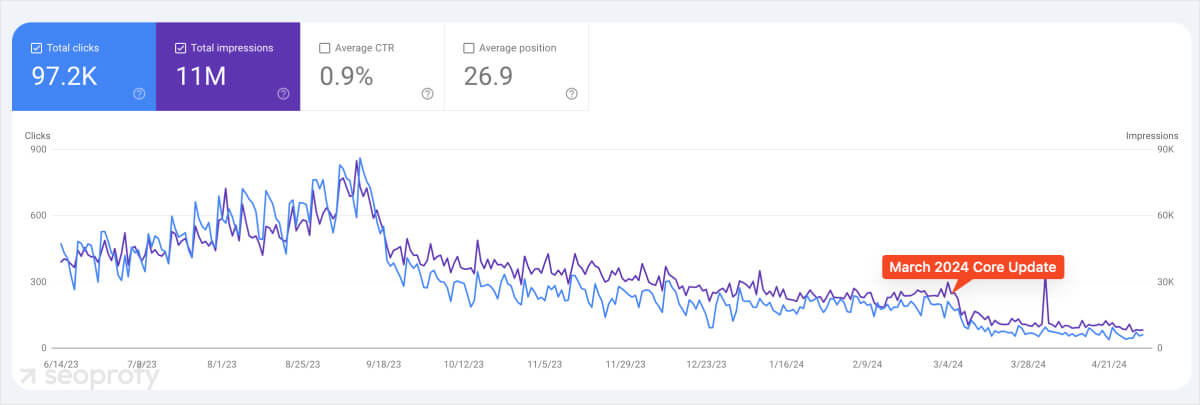
[notes]
After the March 2024 Core Update and March 2024 Spam Update, the site was receiving around 30-50 clicks per day.
[/notes]
Here’s how it appeared in Ahrefs:
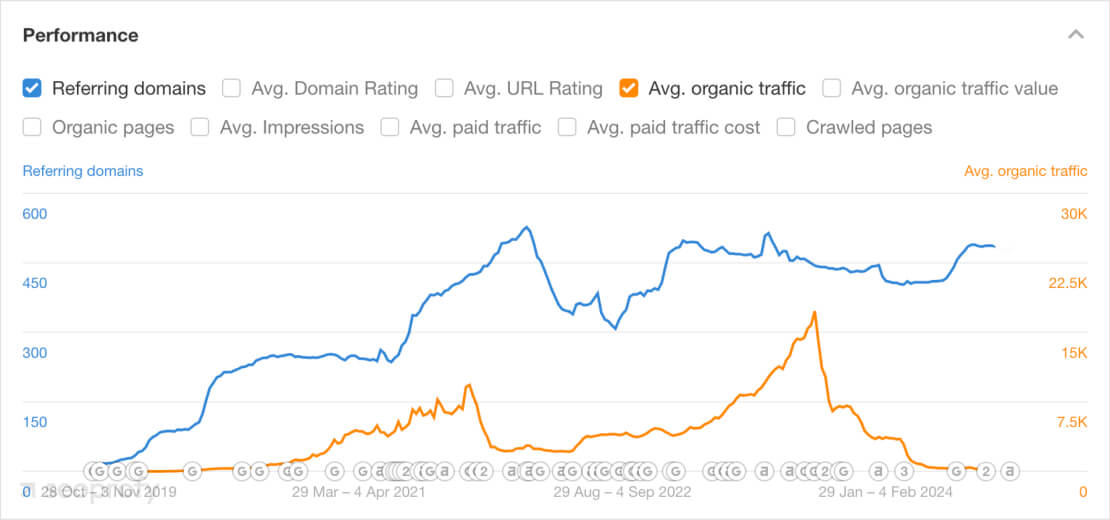
Problem
Technical
From a technical standpoint, the site was in relatively good condition, as various monitoring tools like Ahrefs SEO Audit and SiteChecker had been used. We didn’t find any major issues. There were some minor non-critical errors, which we recommended addressing and provided detailed guidelines for, but we did not consider them to be the primary factor affecting traffic recovery.
Here are the issues we identified:
- Disrupted HTML structure on several templates
- Slow loading speed of the main content
- Broken links returning 404 errors
- Some internal links implemented with unnecessary 301 redirects
Content
This is where we saw the main issues. On this type of site, content was duplicated across a large number of pages. Only certain values changed, while the core body of the content remained the same.
To clarify, the site consists of the following types of pages: state pages, county pages, and city pages. Additionally, there are pages categorized by damage types, car makes, and models.
The site is bilingual (EN + ES). The quality of the Spanish version raised some concerns, so we planned to review the content quality with the help of a native speaker.
Link Building
- Link building efforts were handled by the client throughout the entire period of working on the site.
- Low-quality links were continuously added to the Disavow file.
Workflow
Niche Research
First, we selected relevant competitors for analysis. These were divided into two groups:
- Sites that performed well after the Google September 2023 Helpful Content Update and the subsequent updates, either maintaining or growing their traffic.
- Sites that, like ours, experienced traffic and ranking losses after the Google September 2023 Helpful Content Update.
This approach allowed us to focus on both "Winners & Losers," comparing their performance to our site. The goal was to formulate hypotheses regarding the reasons for our traffic drop. Additionally, we examined what actions competitors with similar characteristics took to either retain or increase their traffic. These included site age, number of referring domains, and number of pages.
Using Ahrefs, we analyzed all content changes made by these competitors and evaluated how those changes impacted their organic traffic.
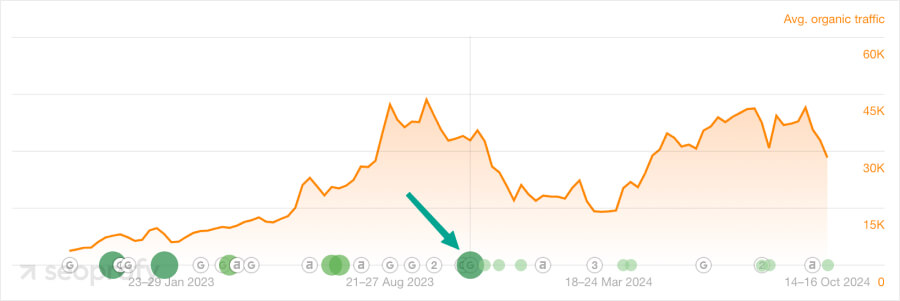
Using Ahrefs and Webarchive, we analyzed changes and developed hypotheses. A noticeable trend emerged: most competitors who lost traffic had significantly increased the amount of content on their pages prior to the decline. However, our analysis showed that this additional content did not provide value to users.
On the other hand, competitors who maintained or grew their traffic actually reduced the amount of content and structured it more effectively. Based on these insights from competitor analysis, we applied a similar approach to the content on our own site.
Content Quality Evaluation
Alongside our niche and competitor analysis, our content team conducted a thorough review of the site’s content. We assessed content uniqueness, evaluating both how unique the content was in comparison to other sites and across different pages within our own site. According to the tools we used for analysis, content uniqueness was over 80%.
However, within the site, we discovered a significant number of pages where the content was more than 90% identical. The only differences were certain values that were dynamically inserted as variables.
Based on this analysis, we provided recommendations to improve our content generation templates, ensuring better content uniqueness across the site. We also reviewed the average content length and its structure, comparing it to that of selected competitors from our niche analysis.
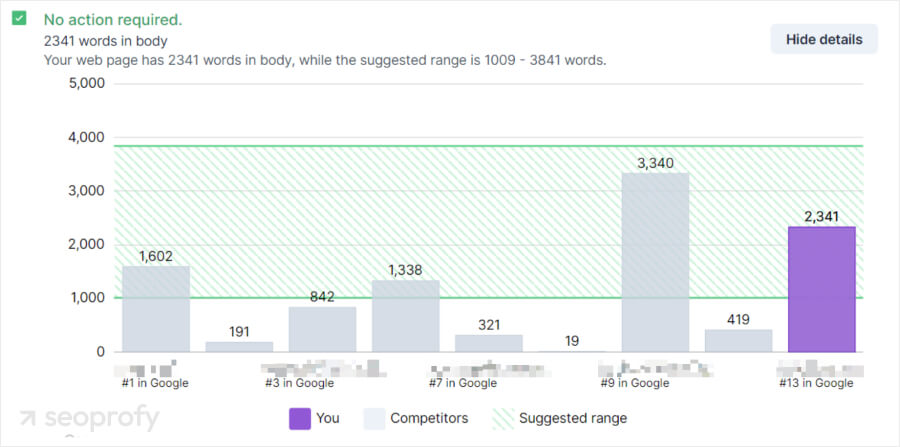
Technical Audit
We conducted a thorough technical audit of the site to identify and fix even minor errors, as described earlier. Additionally, we performed an analysis of errors in Google Search Console. During this process, we discovered a significant number of pages that had dropped out of Google's index.
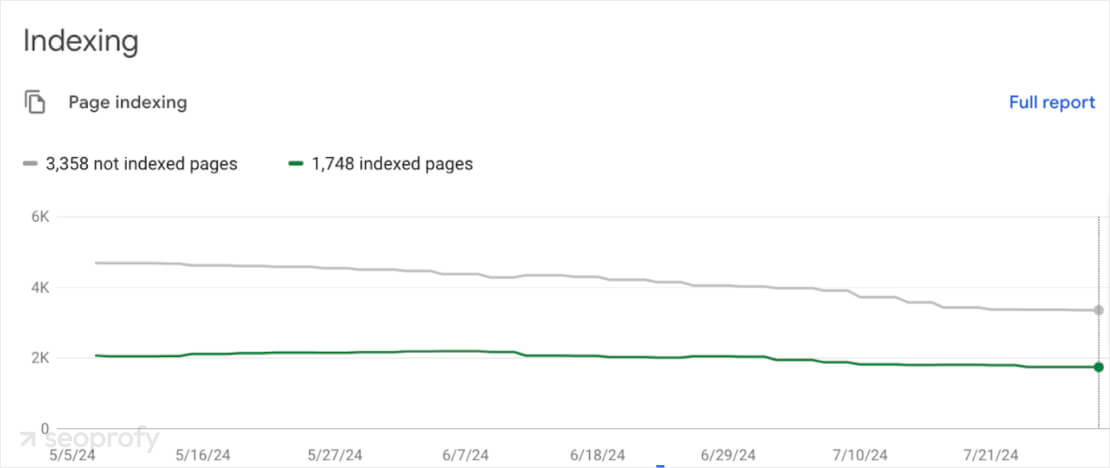
As part of the technical audit, we identified and fixed the key technical issues. Here's the corrected HTML structure of several templates (state, county, and city pages):
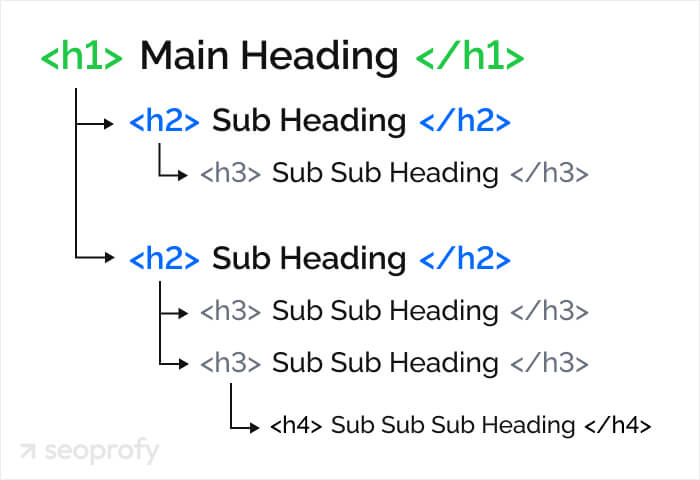
We updated all internal links to avoid unnecessary redirects. Some links had a trailing slash / at the end of the URL, while the server and canonical settings were configured without it, causing unnecessary 301 redirects.
Where necessary, we removed or updated all broken links that returned a 404 server response code. Additionally, the client’s team did an excellent job optimizing the site’s loading speed based on our recommendations.
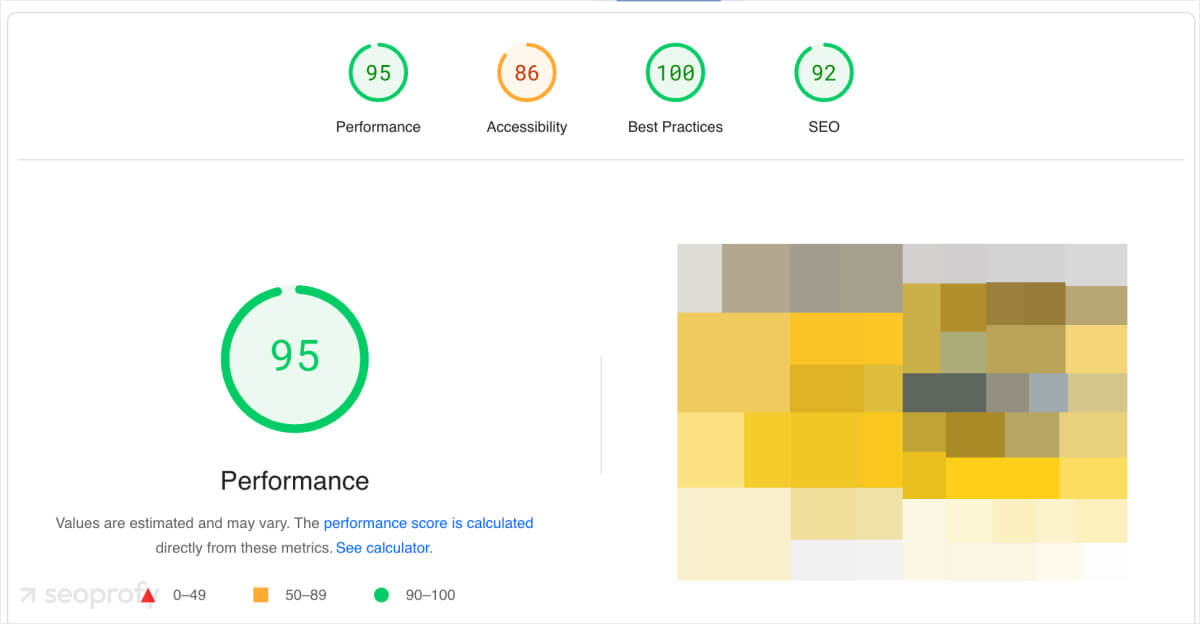
All necessary types of schema markup were already implemented on the site. Therefore, no additional recommendations were needed from our side in this area.
Reviews
Each page on the site (whether for a state, county, or city) included reviews. We discovered that all the reviews were being pulled from the same database, which meant they were identical across all pages. Additionally, on each page, the reviews were implemented in a slider format and were output in large quantities in the page code, further reducing content uniqueness. Moreover, the reviews took up a large percentage of the overall content on each page.
As a result, we provided recommendations, which were successfully implemented by the client. The number of reviews displayed on a page was reduced to nine, and different combinations of reviews from the database were shown across different pages.
Pages that Did Not Drive Traffic
It was decided to deactivate all pages that had not generated traffic in the past six months. We removed all internal links to these pages, and they were also excluded from the sitemap. To expedite the process, these pages returned a 410 response code.
Links
We reviewed all of our external links obtained from various sources, including Google Search Console, Bing Webmaster Tool, Ahrefs, Semrush, and our Search Analytics tool.
The links were analyzed using our Link Checker PRO tool, which integrates data from Majestic and Ahrefs. Any suspicious domains were manually reviewed.
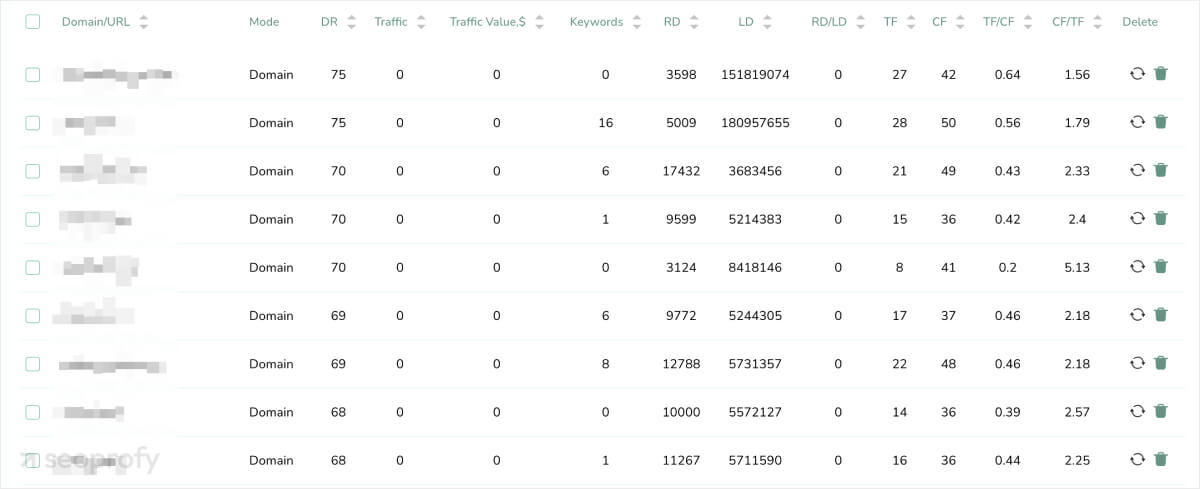
After completing the analysis, links that were deemed to have a potentially negative impact on the site were added to the Disavow Tool.
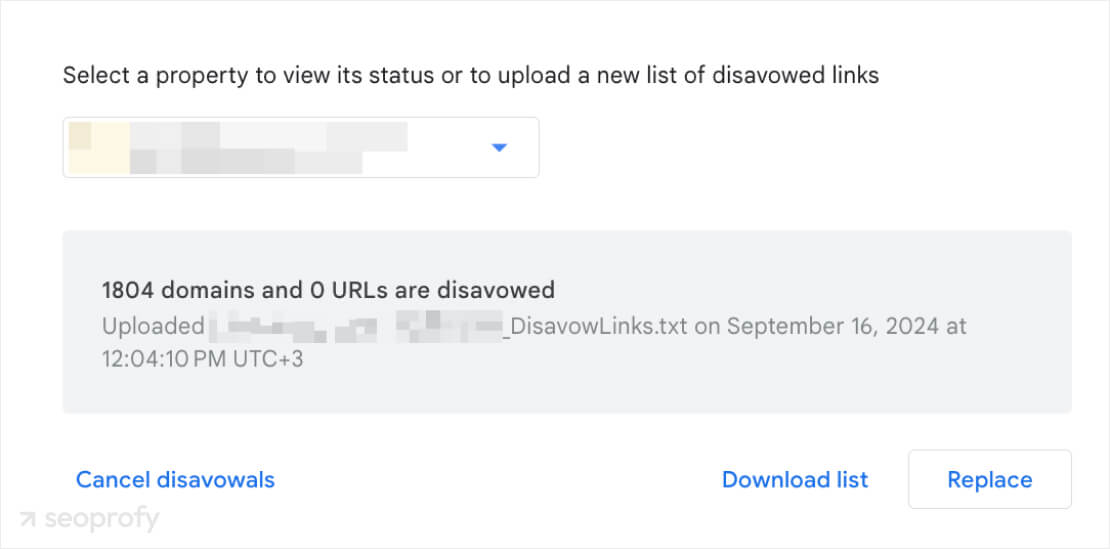
Unfortunately, despite all these implementations, the expected results were not achieved. Month by month, traffic continued to decline and eventually stabilized at 30-50 clicks per day.
Therefore, in agreement with the client, we decided to continue the collaboration on a monthly basis and move toward more drastic changes that could potentially reverse the situation and help restore rankings and traffic.
Part 2: Ongoing SEO Cooperation with a More Aggressive Strategy
It was decided to disable the Spanish version of the site, as it was generating almost no traffic (and barely any impressions). The content quality in Spanish was quite low, and there were almost no external links built for the Spanish version of the site.
As a result, the Spanish language version was deactivated, and all pages were set to return a 410 server response code. We also submitted a request through Google Search Console to temporarily remove the Spanish version from Google’s search results.
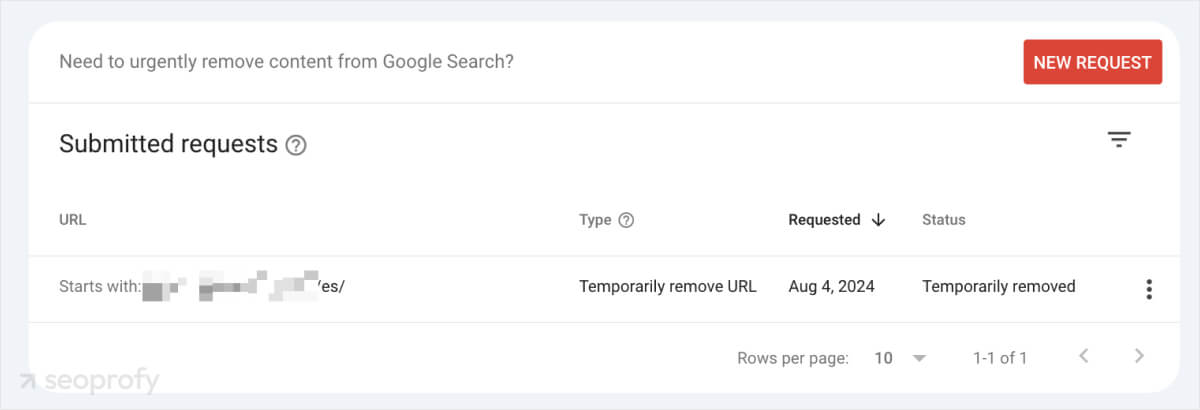
The content generation templates were updated. Specifically, the content quality and uniqueness were improved by using more variables. Additionally, we started using more diverse templates for pages of the same type.
A blog content audit was conducted, and based on the results, all articles that weren’t generating traffic were removed. These were mostly short news pieces or notes of 300-500 words.
Thus, the number of pages on the site was significantly reduced, and we believe that what remains is high-quality, relevant content. After disabling and deleting pages, the total number of pages decreased from around 4.5K to 2.7K.
We completely overhauled the internal linking logic. The cross-site blocks of links were modified, removing all commercial keywords from the anchor text. The site’s design template was also updated.
Next, we configured the Indexing API and, within the daily limit of 200 URLs/day, submitted reindexing requests for all the pages on the site. This allowed us to get Google to recognize all the changes on our site as quickly as possible. As a result, we achieved over 90% indexing: 2447 out of 2700 pages were indexed according to the sitemap check in Google Search Console.
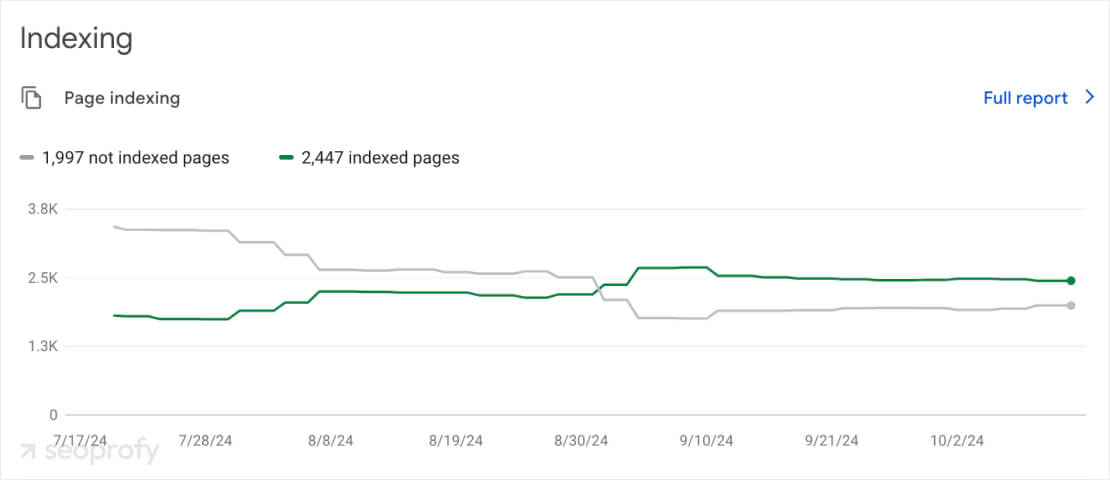
In the Seocrawl tool, we set up automatic tracking for the indexing status of each page on our site.

Links
In parallel with all the other work, the link building process continued but with some changes. In most cases, links were built from quality, industry-relevant platforms pointing to the homepage of our site, using branded or diluted anchor text.
The main requirement was that the platform be automotive or closely related to the automotive industry, with traffic coming from the USA. DR (Domain Rating) was not a critical metric for us; we focused more on the quality and relevance of the traffic.
Guest posts we wrote and published on selected platforms also included additional outbound links to other trusted resources, as well as internal links to the platform where the article was published.
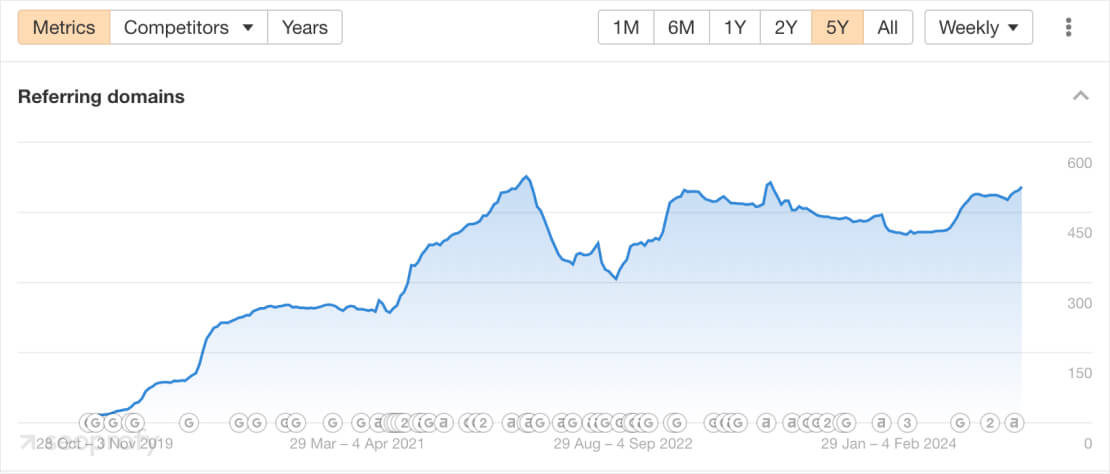
We also included links from homepage placements, which we acquired through the Shared.Domains service, accounting for 10% of the total number of backlinks we built.
Results
The first positive changes coincided with the August 2024 Core Update. Traffic started to gradually recover, as seen in the screenshot below.

Currently, we are receiving around 400-500 clicks per day and continue to regain rankings for most of the search queries we optimized for.
This is how it appears in Ahrefs:

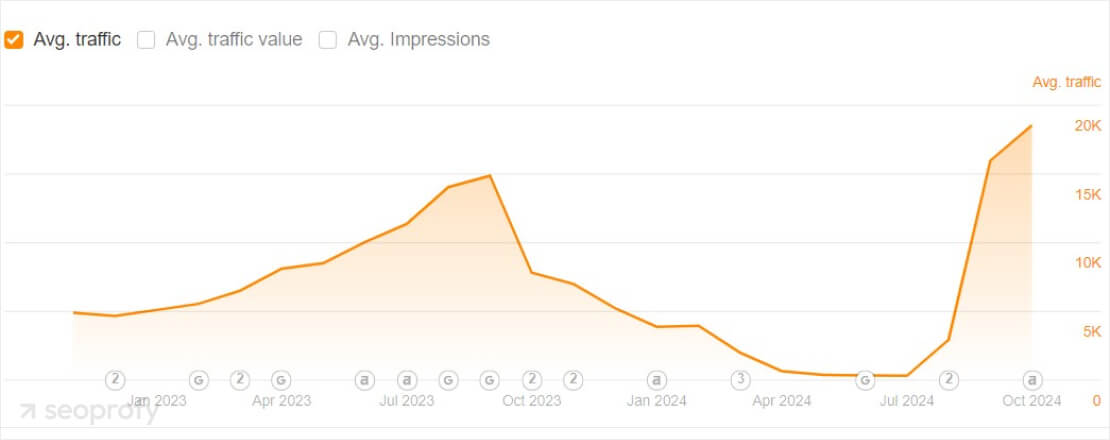
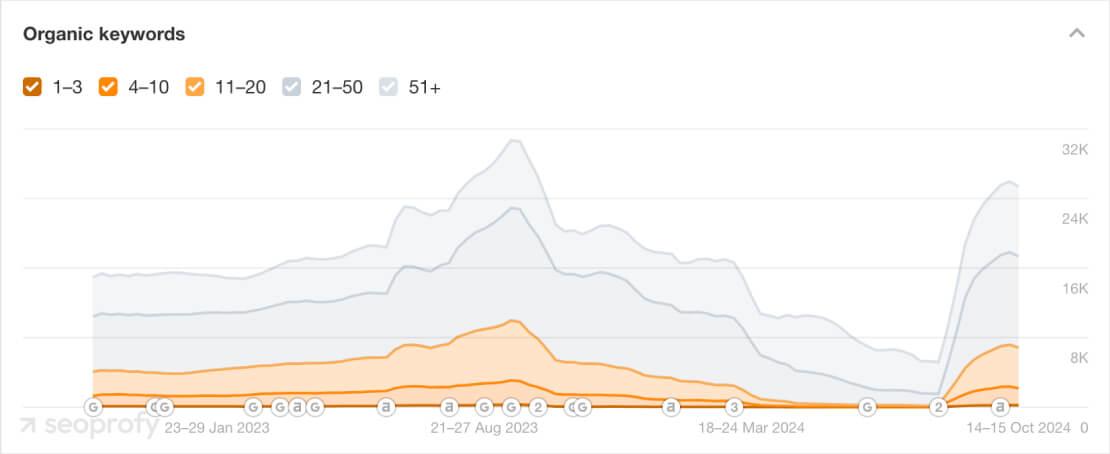
Data from Seocrawl:

The collaboration continues. We’ve identified growth opportunities and developed a clear action plan for the next few months to scale the results achieved so far.
If your website is facing similar issues, our SEO experts are here to help. Contact us today, and let's work together to restore your traffic and improve your rankings.
